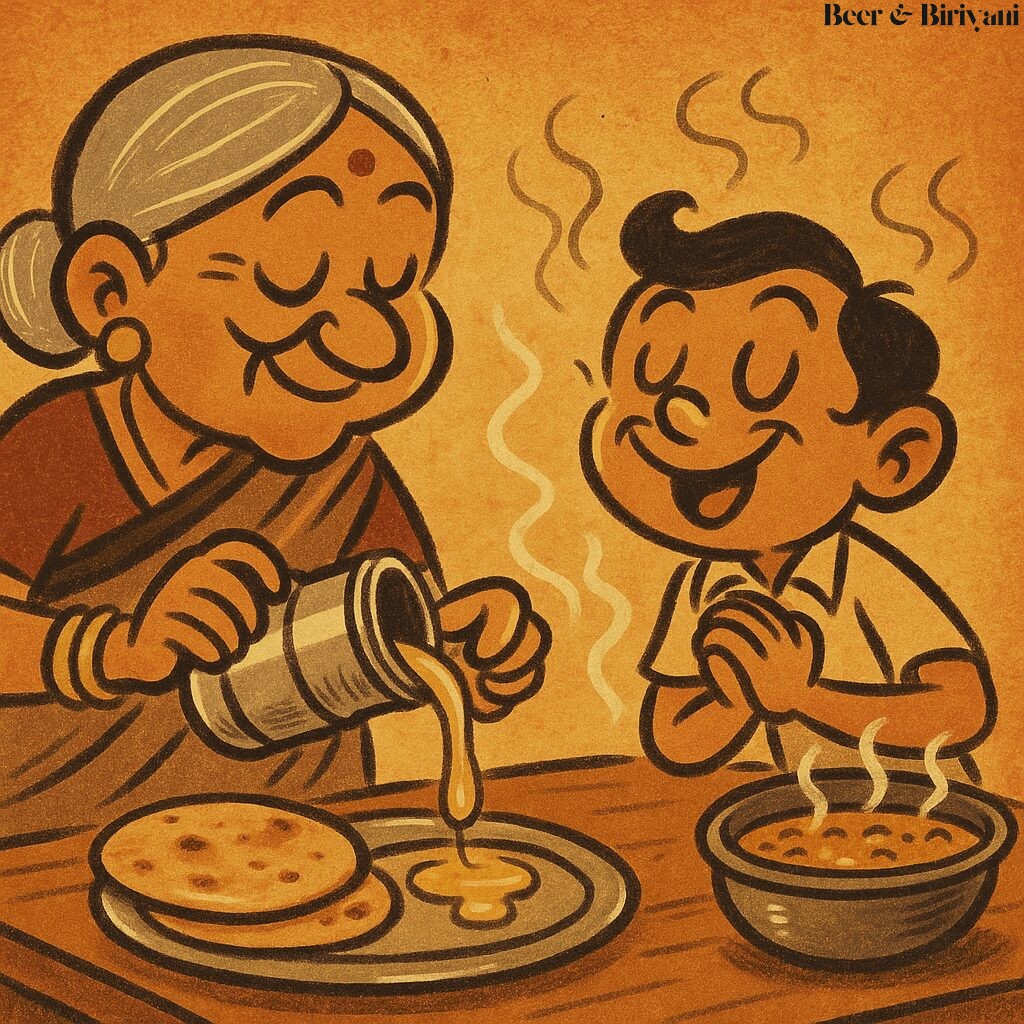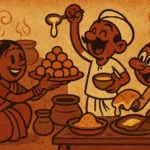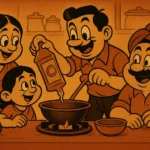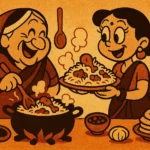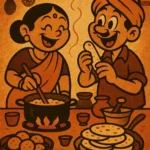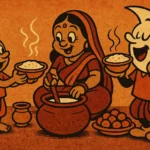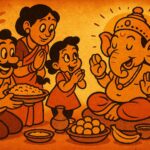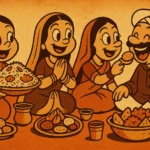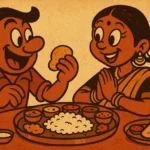There’s a certain sound that tells you something magical is about to happen in an Indian kitchen. Not the sizzle of oil, not the clang of a ladle—but the quiet, reassuring glug of ghee being poured. Thick, golden, and slightly defiant in its richness, ghee is one of those rare ingredients that transcends taste. It doesn’t just flavor food. It finishes it. Crowned, blessed, made whole. And as I’ve learned over time, especially since moving from Mumbai to Austin, ghee isn’t just a pantry item—it’s a feeling.
The Smell That Says, “Dinner Is Serious”
In my mother’s kitchen, ghee meant the dish had gone from everyday to “company’s coming.” Even the simplest dal—one that had been gently burbling for hours—would only truly be complete when a spoon of ghee was poured over the top, blooming with cumin and a lone dried red chili. The smell? Immediate goosebumps. You’d smell it before you saw it. You’d taste it before you touched the plate.
Ghee has a way of making everything feel like a ceremony. Khichdi? Better with ghee. Paratha? Needs ghee. Even sweets like halwa and laddoos feel slightly fraudulent without that glossy, fragrant depth that only ghee provides.
Old-School Staple, New-Age Darling
Of course, these days, ghee has had a glow-up. Once scoffed at by Western diet culture for being “too fatty,” it’s now a buzzword in wellness circles. It’s paleo. It’s keto. It’s shelf-stable. You’ll find jars of it at Whole Foods, priced like luxury skincare. And while I love seeing ghee get its moment, I can’t help but smile at the irony—this “ancient superfood” was just the default fat in my grandmother’s cooking. She didn’t need bulletproof coffee to tell her it was good for you. She had tastebuds, intuition, and generations of women before her who used ghee as both food and medicine.
Making Ghee Is a Ritual
Ask any Indian kid who grew up with a mother or grandmother making ghee from scratch—it’s practically a rite of passage. The slow simmering of malai (cream) collected painstakingly over days. The transformation from white to gold. The house filling with a nutty aroma so dense you could wear it. The bits at the bottom—boondhi or residue, depending on your region—were the cook’s tax. A reward for patience.
I’ve tried making it here in Austin, using unsalted organic butter from the farmer’s market. It works. Technically. But it never smells quite the same. Maybe it’s the butter. Maybe it’s the steel pan instead of the kadhai. Or maybe it’s the missing chatter—no one yelling from the living room, “Jala mat dena!” (Don’t burn it!) right when it reaches peak frothiness.
Ghee in the Medicine Cabinet
We didn’t just eat ghee. We respected it. If your lips were dry—ghee. If you had a mild burn—ghee. If you couldn’t sleep—warm milk with ghee and jaggery. There was a time my mom even tried using it to tame my frizzy hair. (It worked, but at what cost?) Ghee was as much healer as it was ingredient. Even Ayurveda considers it sacred—sattvic, grounding, nourishing for body and spirit. And honestly, have you ever met a tandoori roti brushed with ghee that didn’t feel like a hug?
The Taste of Absence
In my early twenties, I went through a brief “low-fat” phase. Blame it on peer pressure, bad advice, or the misguided belief that margarine had morals. I cooked dal without ghee. I made upma with oil. I tried baked samosas. And sure, the food was edible. But it didn’t feel right. It didn’t feel like home. Something was always missing. A depth. A generosity. A glimmer of joy. Ghee, I realized, was not just an ingredient—it was a mood setter. A vibe enhancer. A way of saying, “You’re not just eating, you’re being cared for.”
Every Kitchen Has Its Scent
For some people, home smells like coffee. For others, cinnamon or fried garlic. For me, it’s that exact moment when ghee hits hot rice. Steam rises. Your fingers itch to mix. You scoop a little pickle on the side, maybe a crispy papad. And just like that, you’re not in Austin anymore. You’re back in a tiled kitchen in Dadar, listening to your mother mutter about people who use too much mustard in dal.
So, What Is Ghee?
Scientifically? It’s clarified butter. Pure fat, cooked just past its smoke point, strained of water and solids. Culturally? It’s love made liquid. It’s memory. It’s language. It’s the flavor that lingers long after the plate is empty. And for me? Ghee is proof that some things don’t need to change with the times. They just need to be appreciated again. Maybe in a new city. Maybe in a new kitchen. But always, always with the same reverence.
Born in Mumbai, now stir-frying feelings in Texas. Writes about food, memory, and the messy magic in between — mostly to stay hungry, sometimes just to stay sane.

